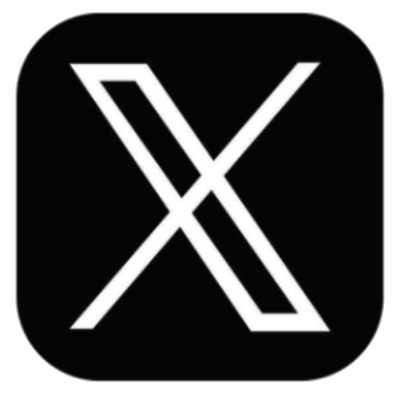
2018 Tesla Model 3 Long Range review: The one you've been waiting for
- by CNET
- Jan 26, 2018
- 0 Comments
- 0 Likes Flag 0 Of 5

The interior
Once you figure out how to unlock the thing, you have access to the most distinctive interior I've ever seen in a modern car intended for the masses. It's truly unlike anything else in production today. The dashboard is a single unit with only slightly more curves than a straight edge yet all the presence of a Eames design. It's dominated, at least on the car I tested, by a strip of raw wood just a few shades darker than blonde. And it's punctuated beneath by a line of brushed metal.
There are no vents -- at least not in the traditional sense -- no gauge cluster and, ultimately, no distractions. Air flows from a seam that runs the length of the dash and from various other vents hidden in the cabin. The look is stark and refreshing and, combined with the openness provided by the glass roof, it's truly a remarkable-looking place. It's so zen that I half expected a whiff of incense the first time I sat down.
The interior is so zen that I half expected a whiff of incense the first time I sat down.
And it doesn't just look good. There's plenty of headroom, even in the back, and everywhere is festooned with storage cubbies and cupholders, a big improvement over the Model S. There's even a dedicated phone-charging area you can set up with your choice of USB Type-C or Lightning connector, though sadly my Note 8 with a slim case wouldn't fit. A good-sized trunk lurks behind the 60/40 split folding seats. And a petite "frunk" (Tesla's name for a front trunk) in the nose provides a little more space. The Model 3 offers 15 total cubic feet of cargo capacity, about half that of the Model S, but more than a BMW 3 Series.
And that it does so in such a beautiful space is admirable, but that aesthetic appeal and purity comes at a cost, and that cost is usability. Things that you can simply and easily do directly in a normal car, or even in a Model S or X, here require a series of taps on the new, 15-inch touchscreen.
The (lone) display
Tesla turned the world on its ear when it stuck a massive, 17-inch display vertically in the dash of the Model S, fitting the same basic system in the
Model X
. Now the company's moved to a traditional landscape orientation, and I think that's a shame. The vertical orientation quickly became my preference, giving more view down the road for navigation or, indeed, space for multiple apps running one atop the other.
The reasoning for the change here is clear. Since the Model 3 doesn't have a traditional gauge cluster behind the steering wheel, the only place for a speedometer is on that central display. By positioning it high and in landscape, the speedo actually isn't too far from your direct line of sight -- lower and portrait, like on the S or X, and it'd be a glance too far.
In general driving I actually don't mind this positioning one bit. It takes a bit of time, but you quickly become used to glancing down-right instead of just down to check your speed. However, it's when you need to interact with the display that things start to go wrong.
Roughly the left quarter of the display is occupied by a large vertical section showing the speed up top, Autopilot status below (assuming the car is so equipped) and, on the bottom, a series of cards you can swipe through. The leftmost card has a series of shortcuts for things such as showing the rear-view camera, displaying the charging interface, toggling voice control and jumping to the wiper page.
The Model 3 lacks a stalk or indeed any physical controls to manipulate the wipers, beyond a single button.
A swipe to the next card brings up the wiper controls, which is where the first issue lies. Unlike the vast majority of cars on the road, the Model 3 lacks a stalk or indeed any physical controls to manipulate the wipers, beyond a single button on the headlight stalk on the left. Push the button for a single sweep of the wipers, hold it to spray the wash. If you want to actually turn on the wipers you need to either swipe or tap your way into the wiper interface and toggle them there.
Now, the Model 3 has rain-sensing wipers and they work pretty well, but during the three days I tested the car in California I had to manually engage the wipers on at least three separate occasions because they didn't toggle themselves, or they weren't going fast enough for my preference.
The lone stalk to the left of the Model 3's steering wheel.
Tim Stevens/Roadshow
On one occasion I was making a (hands-free) phone call while driving through some heavy fog and mist. When you make a call, a fifth card appears to display phone controls. The mist was accumulating quickly enough on the windscreen that I wanted to turn on the wipers. To do that, I had to make three swipes and then a tap on the touchscreen. That's a very long time to take your eyes off the road when driving in the dark through fog. And since this is a touchscreen rather than a physical control, it's much harder to build muscle memory.
After 60 seconds in a normal car you'll be able to toggle the wipers blindfolded. On my third day in the Model 3 I still had to look down at that screen.
On my third day in the Model 3 I still had to look down at that screen.
And then there's the adaptive cruise control. In addition to losing physical wiper controls, somewhere along the line the Model 3 also misplaced the cruise control stalk featured on the Model S and X. That single stalk, which makes it easy and intuitive to change vehicle speed and follow distance, is now replaced by a clumsy mix of physical and touchscreen controls.
Press downward on the shift lever while in motion to turn on cruise control, or double-press to engage Autopilot and Autosteer. At this point, if you want to change your speed you then need to go over to the touchscreen and tap on a very small plus to increase speed, or minus to decrease. Hold either one to change your speed in 5 mph increments.
If that sounds unfortunate, it gets worse. To change the vehicle follow distance you actually need to go into the vehicle settings, then select the Autopilot submenu and tap another set of tiny plus and minus icons. At first I thought this was no big deal. How often do you really change follow distance? As I would quickly learn, the answer is more often than I thought. If I'm driving in heavy congestion then I want to be quite close to the car ahead, but if I'm in lighter traffic I prefer to be further away. Similarly, if road conditions change during the drive I quite often found myself wanting to adjust follow distance.
Frankly I'd never realized how often I tweak this control because, on a normal car, it's so easy to do I don't even think about it. Here, having to reach again to the touchscreen and look away from the road, made it a chore. Having to dig into a submenu? That, frankly, is borderline dangerous, as is having to swipe three times just to get to the wiper controls.
I expressed my concerns to Tesla representatives, who were eager for feedback and indicated that changes are coming. I was told that the wiper control interface is continuing to evolve and that, in the future, the button that currently does a single wipe will somehow be expanded to actually enable the wipers (presumably through a series of taps). I was also directed to this Elon Musk tweet, where he indicates the car is actually still learning to better detect water in the future. Hopefully, it'll learn to detect fog too.
On the cruise control side, Tesla indicated that the right thumbwheel on the steering wheel will be repurposed to allow the changing of speed. As it stands, only the left thumbwheel is fully utilized, for adjusting volume, muting and changing tracks when listening to music.
Those changes will improve on the currently unsafe Model 3 interface, but they will not fix all that ails the car. Regardless of the motivation, deleting key physical controls on the Model 3 creates a user experience that is fundamentally less convenient and more cumbersome, all for the sake of removing a single, 3-inch stalk from the steering column.
There are other frustrations, too. The way the display pokes out of the dash means it infringes into the cabin space, to the point where two members of the Roadshow staff with long legs found it hitting their knees. It's also glossy, so glare can be an issue, and in bright sunlight it's a little hard to read -- never a problem with a proper, shrouded gauge cluster. Finally, while the software itself works well and the responsiveness seems to be improved over the Model S and X, neither
Android Auto nor Apple CarPlay
Please first to comment
Related Post
Stay Connected
Tweets by elonmuskTo get the latest tweets please make sure you are logged in on X on this browser.






 Energy
Energy



















